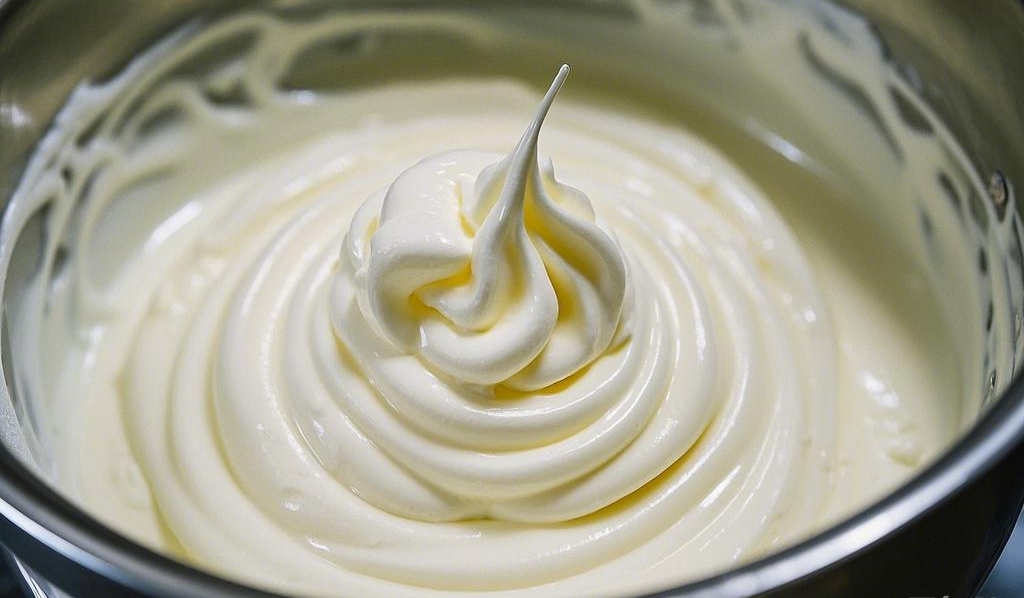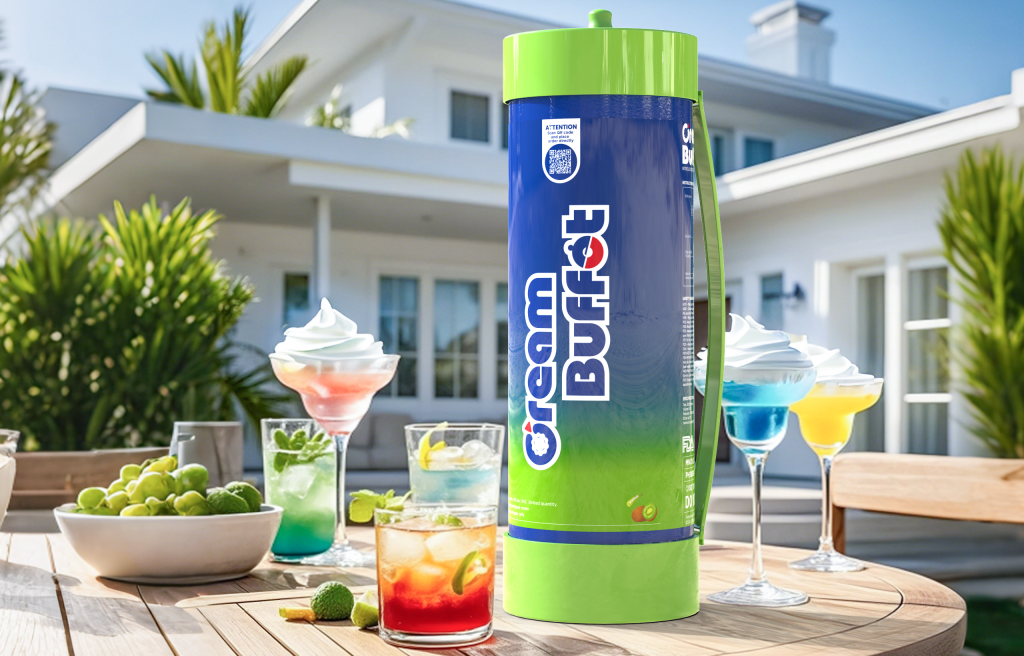We found that up to 80% of baking failures are caused by overwhipped cream. This staggering statistic highlights the urgency of addressing this issue. But why does your cream keep getting overwhipped? In fact, 90% of people are unaware of the key principles behind this problem.
Overwhipping leads to grainy textures and fat separation. Minor overwhipping can be corrected by adding chilled heavy cream, while severely separated cream can be repurposed into butter and buttermilk. To prevent overwhipping, control whipping speed, use chilled cream, and opt for precision-foaming cream chargers. These methods enhance efficiency and success rates, making them ideal for both home and commercial baking.

I.Why Does Your Cream Keep Getting Overwhipped?
1. Understanding the Microstructure of Cream
Cream consists of fat globules (80% milk fat), water, and proteins. During whipping, fat globules trap air to create a foam. However, overwhipping causes a series of undesirable changes. The fat globule membranes rupture, causing fat to clump together, resulting in a grainy texture. Simultaneously, fat and water separate, making the cream appear curdled. This microscopic structural breakdown is the root cause of overwhipping.
2. Three Common Mistakes in Traditional Whipping
(1) Using an Electric Mixer on High Speed (Destroys Fat Structure)
Many people use a high-speed electric mixer to whip cream for efficiency. However, this significantly damages the fat structure, making the membranes more prone to breaking and increasing the risk of overwhipping.
(2) Using Room Temperature Cream (Fat Melts Easily)
At room temperature, cream’s fat is more active and melts easily. Even a slight increase in temperature during whipping can trigger fat destabilization, leading to failure.
(3) Judging Consistency by Experience (Lack of Quantifiable Standards)
Many bakers rely on experience to determine the right whipping stage, but this approach lacks precision. Different brands and batches of cream have varying characteristics, making it difficult to achieve consistent results without clear quantifiable guidelines.
II.How Do Cream Chargers Prevent Overwhipping?
To address the pain points of traditional whipping methods, our cream chargers incorporate innovative technology for precise foam control. They offer breakthroughs in the following key areas:
| Technical Aspect | Traditional Tools | Cream Charger Solution |
| Temperature Control | Manual chilling, prone to warming up | Maintains ≤4°C throughout the process |
| Bubble Uniformity | Large bubbles >40% | Microfoam with nitrogen (≤0.1mm) |
| Efficiency | Manual whipping takes 5–10 min | Instant foaming in 3 seconds |
| Success Rate | Over 60% failure rate for beginners | Standardized operation, >95% success rate |
| Application Scenarios | Basic whipping only | Supports latte art, intricate decorations, and cream toppings |
Real-world testing shows that using cream chargers reduces overwhipping by 83% and decreases ingredient waste by 57%. These figures demonstrate the exceptional effectiveness of cream chargers in solving the overwhipping issue.

III.How to Fix Overwhipped Cream?
1. Slightly Overwhipped Cream (Rough Texture but No Separation)
Solution:
Add 20% Chilled Heavy Cream + Recharge with a Gas Canister
Steps:
- Take 200g of overwhipped cream.
- Add 40g of chilled heavy cream (4°C).
- Recharge in the canister on low pressure for 2 seconds.
Expected Outcome:
Smooth, silky texture with a soft peak that holds without collapsing.
2. Severely Separated Cream (Curdled, Like Cottage Cheese)
Solution:
Make Homemade Butter & Repurpose Buttermilk
Tools Required:
- Fine mesh strainer
- Ice water
- Gas canister (to accelerate fat solidification)
Economic Benefit: From 1L of overwhipped cream, you can extract:
- 420g of butter (market value ~$5)
- 580ml of buttermilk (saves ~$1 on milk costs)
IV.How Can Restaurants Profit from Overwhipped Cream?
1. New Bestselling Product Ideas
- Salted Egg Yolk Cream Tea: Blend restored cream with salted egg yolk sauce and use a gas canister for a velvety cream cap, increasing the selling price by 40%.
- Zero-Waste Dessert Set: Use homemade butter for cookies and buttermilk for ice cream, creating an eco-friendly product line.
2. Cost-Control Strategies
Central Kitchen Standardization:
- Collect overwhipped cream from multiple locations.
- Use a gas canister for efficient butter separation (3× faster processing).
- Distribute butter to bakeries for pastries and pound cakes.
V.Cream Charger Buying Guide
As a professional cream charger manufacturer, Cream Buffet holds FDA, DOT, TUV, and ISO certifications, ensuring compliance with top industry standards.
Key Features of a High-Quality Cream Charger:
- Food-Grade Materials: Made from 304 stainless steel, eliminating the risk of harmful substances leaching into food. Compliant with stringent EU and US food safety regulations.
- Precise Pressure Control: Equipped with an adjustable 0.8–1.2MPa pressure valve, ensuring perfect results for different cream brands and baking needs.
- Superior Sealing: Tested at extreme temperatures (-30°C to 50°C) to prevent gas leakage, extending shelf life and minimizing risks.
- Universal Compatibility: Works seamlessly with all major cream whippers in the US and EU, eliminating compatibility concerns.
Avoid Common Pitfalls:
Some low-cost canisters claim to support “unlimited refills,” but their actual lifespan is often under 200 uses. In Western markets, durability and reliability matter more than price. Choosing Cream Buffet means choosing quality and assurance.
VI.Frequently Asked Questions
Q1: Is Overwhipped Cream Still Safe to Eat?
Yes, as long as the cream hasn’t spoiled. Follow our repair methods to restore it. Separated butter should be refrigerated and consumed within 7 days.
Q2: Why Does Overwhipping Still Happen with a Gas Canister?
Key factors to check:
- Cream temperature >6°C: Higher temperatures affect whipping performance.
- Incorrect shaking: The canister must be shaken vertically to ensure even gas distribution.
- Low fat content (<30%): For best results, use 35–40% fat cream.
VII.Conclusion
Cream Buffet’s cream chargers are more than just an upgraded tool—they represent the next step in baking innovation. By integrating precise temperature control, microfoam technology, and standardized processes, they empower both home bakers and commercial kitchens to master the art of perfect cream whipping effortlessly.
What are you waiting for? Try Cream Buffet cream chargers today!